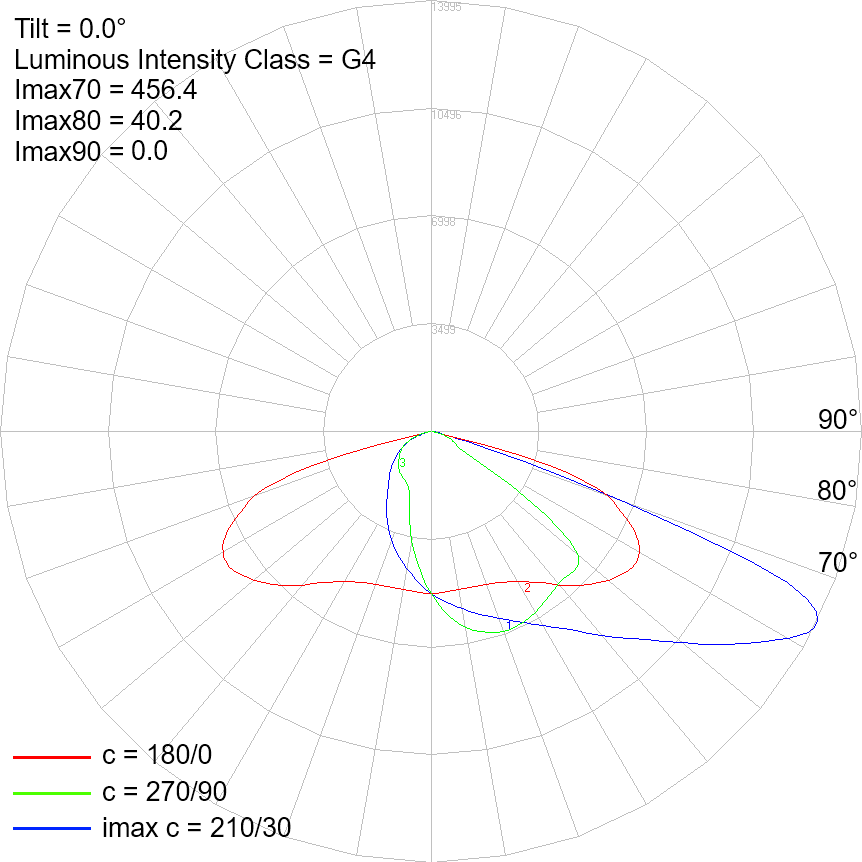It’s late summer, you are sat in the garden, sunglasses on, enjoying a nice cold beverage whilst catching some final late-evening rays as the sun drops towards the horizon - sounds idyllic. But we all know that when driving at this time of day – during sunrise or sunset – glare is often problematic.
Whilst glare in circumstances like this is very noticeable, road users also experience glare during night hours caused by artificial lighting.
Whilst we all know what glare is – what is it really? There are two main types of glare: discomfort and disability glare. Discomfort glare is caused by high luminance in the field of view. It causes the observer to instinctively look away from the light source. Disability glare impairs the observers’ vision without necessarily causing discomfort. Disability glare is caused by the internal reflection of stray light within the eye which is superimposed on the retina. This is called veiling luminance. This in turn reduces the contrast between the observing point and the light source which can affect the ability of the observer to identify hazards or the speed and distance of other vehicles.
The eye needs time to readapt to the surrounding light levels after being exposed to disability glare – especially in low ambience light zones such as rural roads. This can take anywhere from a few seconds to minutes depending on the age and health of the observer’s eye. [1]Note: the effects of glare reduce as the ambient light levels around the observer increase. Also, the recovery time relating to the glare reduces with increasing ambient light.
GLARE - THE BASICS
On traffic routes, glare is measured in two ways – Threshold Increment (TI%) and Luminous Intensity Classes (G-rating, G0 to G6). Threshold Increment measures the amount of disability glare using a ratio between veiling luminance and background luminance.
Luminous Intensity Classes on the other hand look at the amount of light within a region above a pre-defined vertical angle. It was originally designed as a measure to categorise luminaire light distributions based on the amount of upwards light produced, with the aim of promoting luminaires that produce less light pollution. Whilst this parameter does not truly measure glare, assuming the distribution of light is generally directed towards the area to be lit, i.e. the road rather than the verge, it can help indicate the amount of light a driver might experience at different distances from a luminaire.
Luminous Intensity Classes are heavily dependent on the location of the observer relative to the peak beam of the luminaire whereas TI% is heavily dependent on the viewing angle of the observer.
Additionally, Luminous Intensity Classes are omni-directional relative to the luminaire. TI% looks in a fixed direction, and only considers the luminance on the road.
The assessment considers light above the 70° cone with more stringent limitations placed on the regions above 80° and 90°. The reason for Luminous Intensity Class being helpful in assessing glare is because of the geometry of the light path from the luminaire to the driver’s eye. The driver is assumed to be looking at 1° below the horizontal and have a field of view that extends 20° upwards to 19° above the horizontal. Co-incidentally, light that is emitted above the 71° (90° – 19°) up-angle will be within the -1° to +19° dihedron defining the drivers’ field of view. However, the background and surroundings will typically be relatively dim resulting in increased contrast and therefore higher disability glare.
A final consideration that isn’t directly addressed through the use of Threshold Increment is the effect of the driver moving along the road. In calculating TI%, the standards assume the driver hops from one calculation grid point to the next. However in reality, the angles of the light to the driver’s eye is constantly changing and where the main beam of the light distribution extend above the 71° up-angle, the driver can experience a flashing effect in the top of the field of view as the luminaire passes out of sight. Selecting a G-Rating with very limited light over the 70 ° up-angle is an effective control and minimises this flashing effect, significantly increasing the comfort for the driver who on long journeys could be exposed the flashing over several hours. It is likely that a G3 luminaire will create this flashing effect, whilst a G6 luminaire is unlikely to create flashing as can be seen from the green peak beam distributions for G6, G4, G2 and the unclassified polar diagrams below.
APPLICATION OF THE TI% ANDG-RATINGS
Recently there has been some discussion around the use of blanket G-ratings on the Highways network and whether they should be used at all. Some say that TI% provides a much better metric for measuring glare specific to the road layout. Whilst this is true, there are some problems with this.
Both metrics can assist with assessing the potential for glare, as we have established. However, they function slightly differently.
Luminance is only measured for (relatively) straight sections of road that are flat, and so TI% is not easily applied on bends or on the crests of hills. For crests of hills, there is a requirement in BS 5489-1 to use G4 to G6 rated luminaires to limit glare from the luminaires beyond the crest.
While TI% is an important measure of glare, it should be used in conjunction with G-ratings to prevent problems where the calculation of TI% doesn’t fully represent the curves and elevation geometry of the road.
IN CONCLUSION...
Provided that the chosen luminaire provides you with a suitable distribution, G-ratings (when read in conjunction with the Imax values) provide a good first indicator of potential glare levels. Threshold Increment should then be used to fully and accurately assess glare levels.
Additionally, G-ratings can mitigate problems with glare where Threshold Increment falls short such as on bends or on the crests of hills.
Lastly, increasing G-rating requirements from e.g. G3 to G6 can reduce the amount of apparent flashing from luminaires passing through the top-end of an observers’ field of view.
A point worth considering
Threshold Increment factors in the condition of the eye of the observer – which is assumed to be in perfect condition. For example, the age of the observer’s eye is taken by the standard to be 23 years. However, research suggests that older observers experience higher levels of disability and discomfort glare. This effect levels out at age 50.[2] A large section of the calculations for Threshold Increment was formulated in the 1970s – research was completed before that.
A point worth considering might be that the United Kingdom (and many other western countries) has an ageing population. According to the Department for Transport[3], 87% of the population within the 50-59 age band hold a full driving license, with the 40-49 age band (85%) and 60-69 age band (83%) following closely behind. On the contrary, in the 20-29 age band, only 65% hold a full driving license.
Whilst this cannot be taken as a direct extrapolation of how many people from a certain age group use the roads and therefore road lighting, it is clearly demonstrating the gap between the assumptions and real life.
Should we as industry professionals be considering the effect of glare on an ageing population and therefore assume that the driver is older than 23 years old?
Guus Ketelings and David Lodge CEng MICE MIEAust CPEng – Technical Director
Sources
[1] [Van Derlofske J, Chen J, Bullough JD, Akashi Y. 2006. Headlamp glare exposure and recovery (SAE paper 2005- 01-1573). Society of Automotive Engineers 2005 Transactions Journal of Passenger Cars - Mechanical Systems 114(6): 1974-1981.]
[2] [N Davoudian MArch PhD MSLL, P Raynham BSc MSc CEng FILP MCIBSE FSLL and E Barrett MSci PhD. Disability glare: A study in simulated road lighting conditions.]
[3] [https://www.gov.uk/government/statistical-data-sets/nts02-driving-licence-holders]





